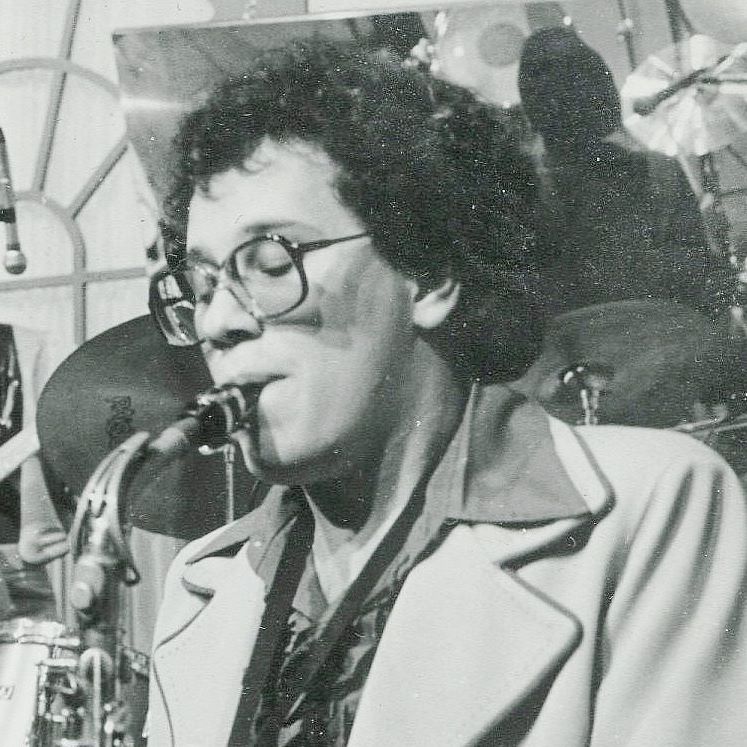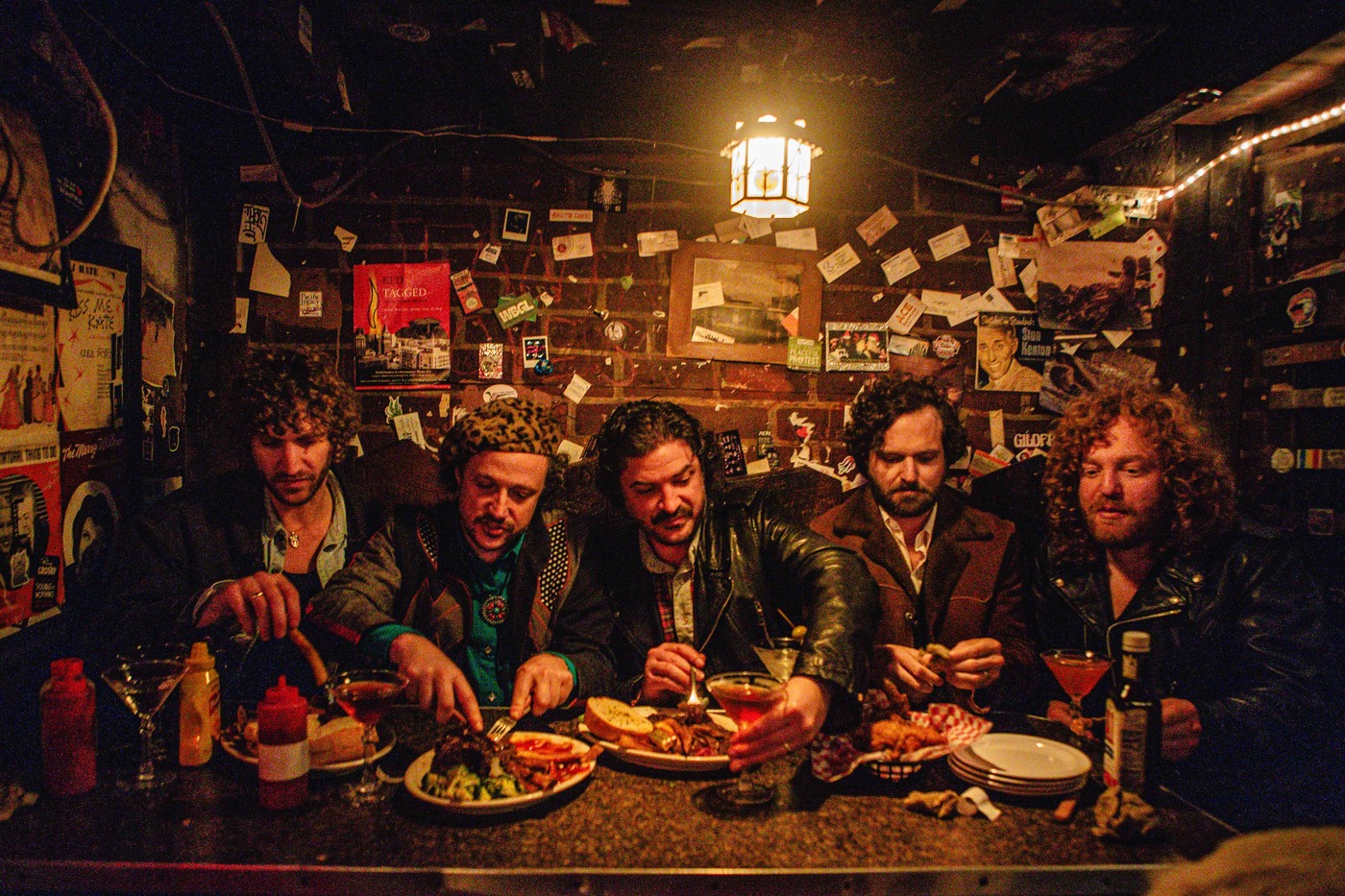Sal Sax | Interview | Ruby & The Mudflaps
Sal Sax was busking in Munich back in the 70s when he was approached by Amon Düül II member Chris Karrer. He was offered to play on a song off their ‘Almost Alive…’ album…
Sal was also involved with Ruby and the Mudflaps and did a lot of session work for various bands in the 80s. Cordial Recordings recently released a fantastic album by Ruby and the Mudflaps. It features three studio takes by Ruby & the Mudflaps alongside a number of live recordings from the 1970s.
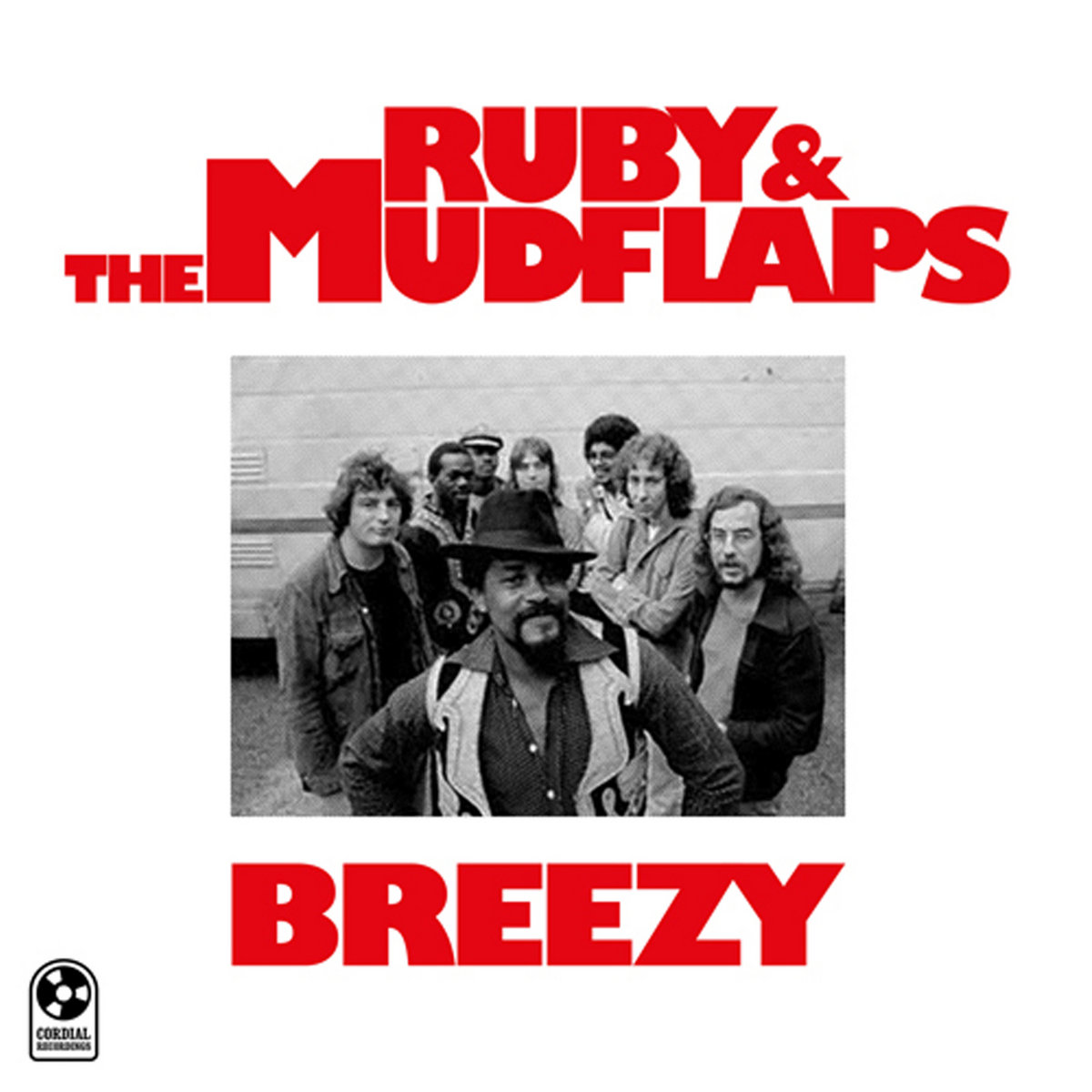
What can you tell us about your upbringing and early childhood?
Sal Sax: I was born in New York City 1n 1953 and raised on suburban Long Island during the 1960’s. I was educated at public schools where I was given the opportunity to select a musical instrument to study.
How did you first get interested in music?
The instrument I chose was the clarinet, it was something I saw on television on a popular musical program called the Lawrence Welk show. In 1959 Lawrence Welk was broadcast each Saturday night and featured popular music of the day played by his orchestra. I asked my parents about the “black sticks” that the men were playing on the show. My father told me about jazz musicians Benny Goodman and Artie Shaw who played the clarinet and that he listened to them when he was young in the 1930’s during the Big Band era. He rented my first clarinet from a local music store and I began to take music lessons in school at nine years old. My teacher was Francis Terry who taught music at my school. He would gather the clarinet students and teach us the basics of music. I made it into the school band and began to really enjoy music. I continued to play the clarinet until I was about twelve years old when I switched to the saxophone. I wanted to make the change because rock and roll music utilized the sax much more during the 1960’s… The Beatles and The Rolling Stones even featured the saxophone in some of their music. In high school I joined the Dance Band. That’s when I began to learn more about jazz music. I began to listen to bands like Chicago Transit Authority and Blood, Sweat & Tears. I must have played Chicago’s second album a 1000 times on the new record player that my uncle gave me. I was learning to play songs such as ’25 or 6 to 4,’ ‘Make Me Smile’ and ‘Color My World’. Along with some of my classmates in 1967, I formed my first band which was influenced by the trumpet playing musician Herb Alpert. We played all of the hits from his ‘Whipped Cream’ album at local meetings and functions in our town. At fourteen years old, we had become professional musicians. More bands followed as we grew older and the music had started to change.
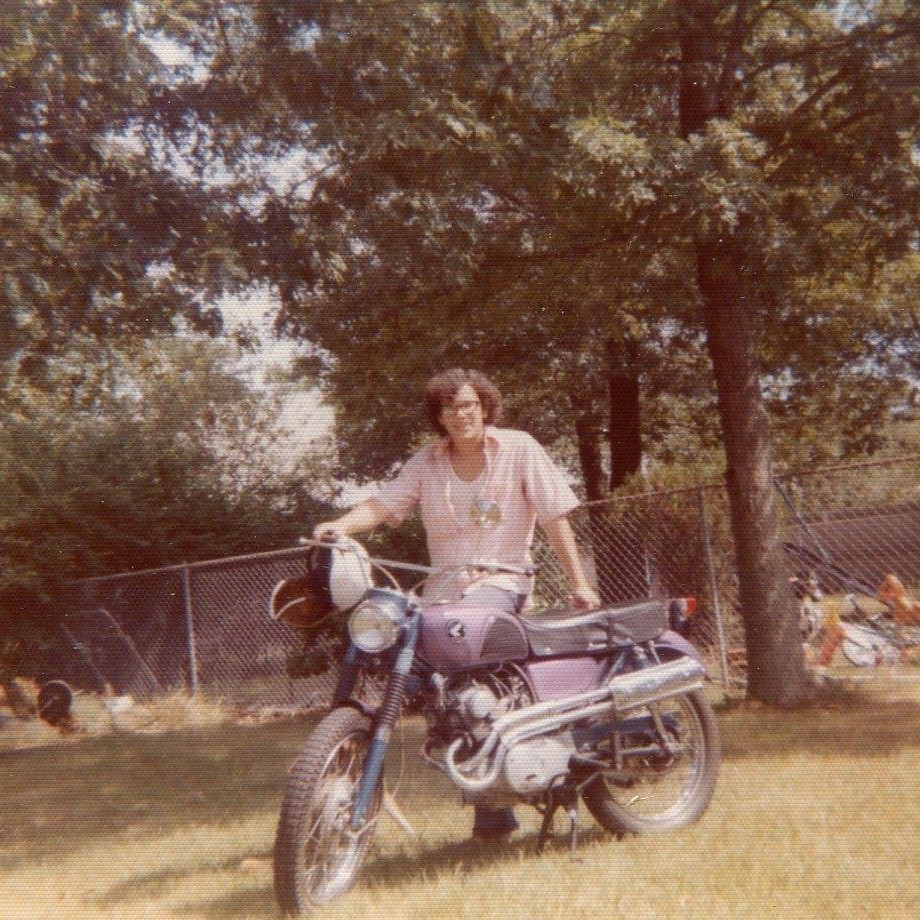
What led you from NY to Germany?
After college I began to do some traveling. The first trip I took was to Los Angeles California in 1975 when I visited my old friend who played the trumpet who had moved there with his family. I was in Hollywood and came to meet many good student musicians there. I did not stay long though, I headed back to New York and played with more bands. I wanted to travel more and I began to think that Europe would be interesting to see. I was able to make contact with a friend that I had met in California who lived in Munich. I left NY in the Summer of 1977 thinking that I could make a living in Europe as a musician. I had a limited knowledge of German but felt confident that I would get by. When I arrived in Munich I began to search for work. When I visited the Marienplatz I met up with a British busker who played the guitar and sang folk songs. He and his brothers would travel to Germany each Summer to play for the tourists that flocked to Munich. Martin Wright and I became very popular that Summer. We not only played the streets of Munich’s tourist center, we also found several night clubs that would give us a stage to perform on. It was during one evening that I met a fellow who seemed very interested in listening to our street performance.
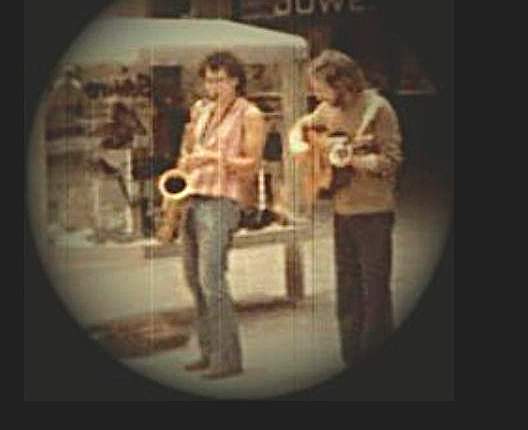
He came up to me and asked if I would be interested in recording some saxophone for him and his band called Amon Düül II. That was Chris Karrer. I was paid for the session and continued to play the streets with Martin always hoping to find more work as a session player. I encountered many good players while in Munich and had the good fortune to meet a journalist named Jan Tyszkievicz who worked as a radio announcer for Radio Free Europe. He noticed us playing music in Marienplatz one morning and asked me if I would help him put together a program about jazz to be broadcast to Poland through Radio Free Europe. I told him I would be glad to do it. He told me where to meet him at the RFE studio in Munich and gave me access to their record library. I chose the music that I had been listening to which included famous drummer Buddy Rich’s big band, George Benson’s ‘Breezin” and other favorites of mine. Jan was very inspirational in that he had been responsible for presenting programs to the people that were living behind the Iron Curtain. He interviewed many famous persons through his years with RFE and now wanted to know what a young musician from NY was doing in Munich. Not long after this, my busking days came to an end. Martin and I had become regulars in Munich’s tourist area and the local Polizei were taking notice. We would be playing our songs and then suddenly the police would zoom by us to try and scare us into moving along. We usually played four times a day, twice in the AM and twice in the Pm near the Rathaus on Marienplatz. One day came along and the police detained us and brought us down to the station where we were made to give up our instruments for a day and told to leave Munich. Martin decided he had enough and went up to Nuremberg to continue to play.
So you met Chris Karrer while playing on the street?
As previously mentioned, while playing on the street and meeting up with Chris Karrer of Amon Düül II. I was intrigued by their sound and approach to the music that they made. I met Chris Karrer on the street. I was playing the sax doing some busking and Chris was listening to us. He came up to me after a song (probably Jimi Hendrix’s ‘All Along The Watchtower’) and told me he wanted to hire me to do some playing for a studio recording session that he was producing.
What do you remember from ‘Almost Alive’ sessions you did for Amon Düül II?
He did and I was glad to find work. It sounded like something fun to do. I arrived in Munich in early June from NY where I played in local bands in night clubs mostly on Long Island where I am from. I had never heard of Amon Düül II… Chris Karrer gave me instructions on how to get to the studio and that the session would begin late at around 10 pm. I was unfamiliar with the area so I made sure I left the apartment where I was staying early in order to get there on time. I arrived in the area and searched for the studio as it appeared to be in a residential area. I asked some people if they knew of the place and they pointed me in the right direction. When I arrived, I was ushered to the control room and there Chris explained to me what wanted me to play. I was really enjoying the experience because everyone involved was so professional and the studio was very state of the art. The recording engineers placed me into the recording booth and put my headphones on and I listened to the rhythm track that was previously recorded. After playing the phrase that Chris wanted a few times, we recorded the part and then listened back to it in the control room to see if it was acceptable. He seemed to like it and paid me for my time (about $50.) The session continued with the band laying some more tracks down. They finished at about 2 am and were kind enough to drive me back to Schwabing in an American Chevy Camaro. What a memorable night. I never received a credit on the album for my sax playing, but I wasn’t bothered by that because I was paid for what I did. I never even knew the title of the song we worked on… Only years later I discovered that the tenor sax on that recording is me playing on the track ‘Feeling Uneasy’ on the album ‘Almost Alive’. Chris played the soprano solo and upper parts on the lead line of the song as well as the vocal.
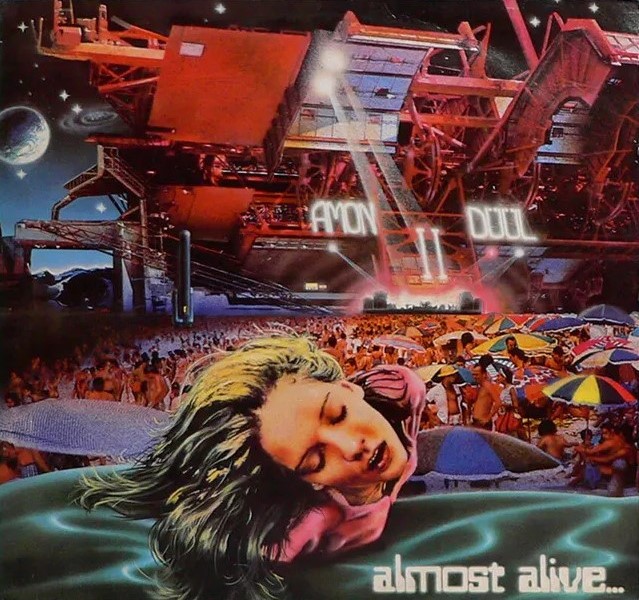
Tell us about Ruby and the Mudflaps.
I remained in Munich and found work in Schwabing near where I was staying. I found work as a sax player with the band Ruby and the Mudflaps. They needed to replace one of their horn players due to his alcoholic tendencies. The Mudflaps played great rhythm and blues and plenty of soul music at the local clubs. At the A/T Podium you could hear this 10 piece band crank out tunes such as ‘I Feel Good’ by James Brown,’Superstition’ by Stevie Wonder and my favorite ‘Don’t Change Horses’ by Tower Of Power. I joined them and got to play with musicians from around the world. Ruby was led by vocalist Mel Canady, an American who remained in Germany after his tour of duty with the US Army. Earlier, he was in a production of “Hair” along with Donna Summer. I believe he is still active as a performer in Munich. We played many parties and festivals including some memorable ones at the Haus der Kunst. I stayed with Ruby until I left Munich for home in August of ’77.
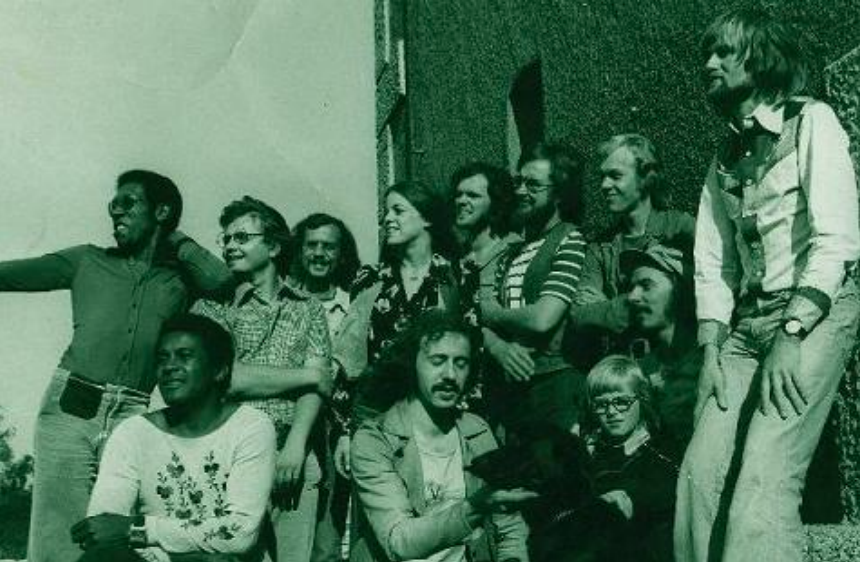
What followed next for you?
I left Munich to go back to NY and played during the Disco era with Afro Cuban Band in 1978. We were very excited to play in this style because it gave us a chance to explore Latin rhythms even though we were disco oriented. The band was on the Arista label and produced by Jerry Love with most of the material written by Michael Zager. We toured in the US and Canada and did many dance TV shows as most disco acts did to promote the Disco sound. Disco died out in the late 1970’s I then began working in the Oldies Band circuit. I played with many of the groups of the 1950’s due to the nostalgia revival of that music in the 80’s. The Coasters, The Del Vikings, and Dion all had prominent saxophone solos in their songs and I played them as faithfully as I could, always adding my own style to the solos. During this time I began teaching woodwind students privately. I’m proud to have helped quite a few youngsters and older folks learn to play the sax and appreciate music.
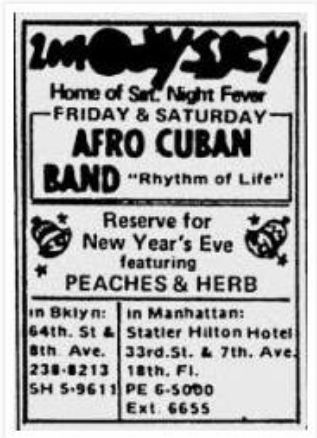
What are some of the most important players that influenced your own style and what did they employ in their playing that you liked?
I like to introduce my students to some of the artists that influenced me such as Stan Getz for his tone and lyrical style. Coleman Hawkins for his melodic improvisation, and of course Charlie Parker and John Coltrane. I also enjoy Big Band Music… Buddy Rich and Count Basie who I have the greatest love for.
Do you have any other active projects at this point?
I have been able to keep playing popular music in Florida where I now live. My singer and I continue to work at clubs and restaurants. There are many retirees that live here who want to keep dancing. We are happy to see people even at 98 and 100 years old come out and enjoy our music. It’s always fun to perform the hits of the 50’s through the 90’s and the occasional newer music that people like to hear. I am glad that I can keep the music alive and am hopeful that the young musicians will find ways to keep the music going.
Klemen Breznikar
Headline photo: Sal Sax playing with Afro Cuban Band (1978)

